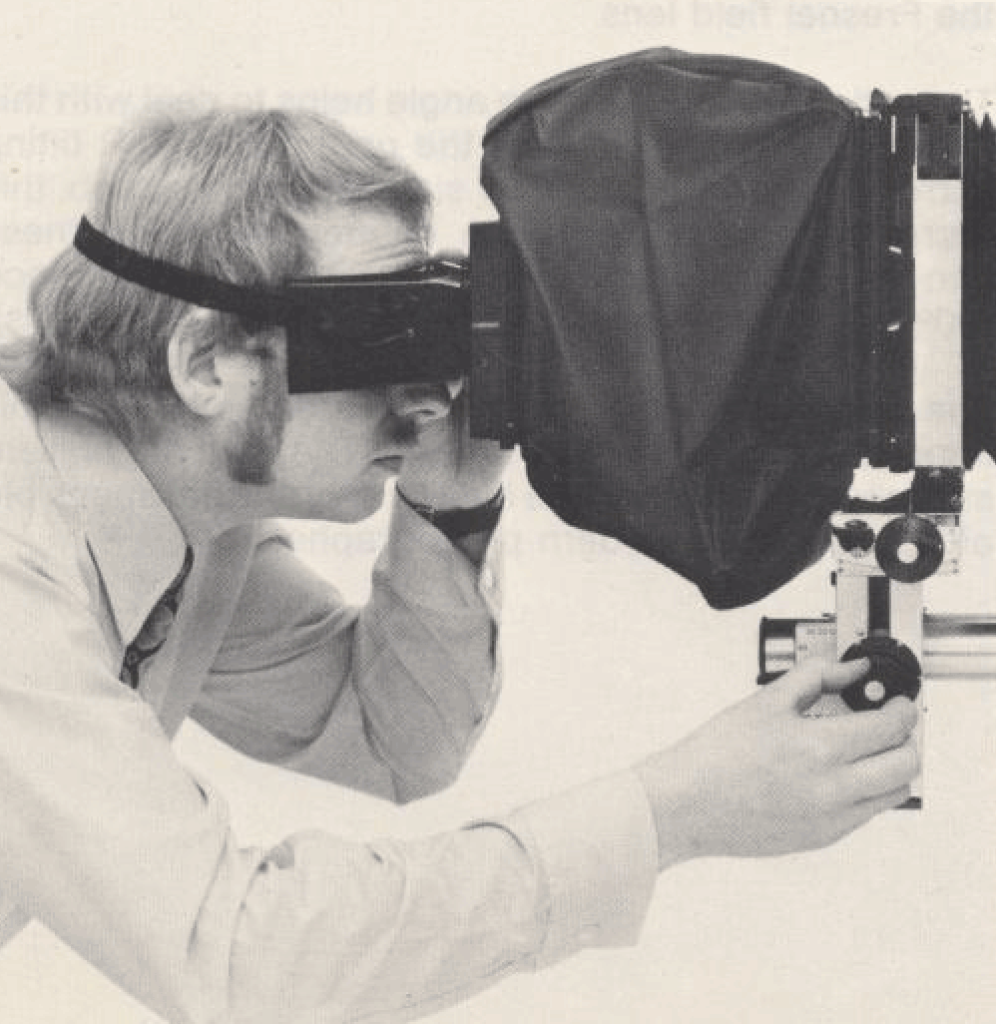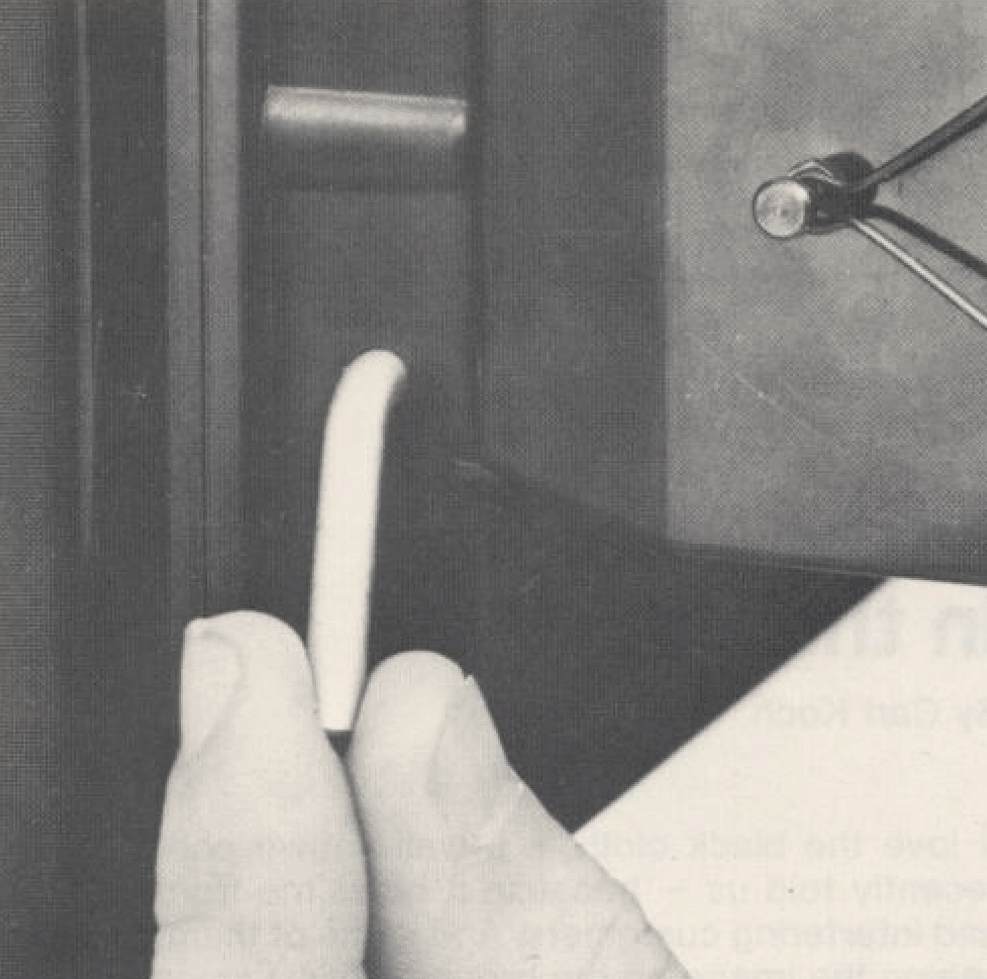
Large camera in the dark?
By Carl Koch


“I love the black cloth” – a well known photographer recently told us -“because it hides me from talkative and interfering customers. And if one of them insists on seeing the image on the ground glass, I smoke out the intruder from underneath the cloth by lighting a cigar.”
From every point of view, image observation of every single shot is obviously vital for the photographer.
But the black cloth is not the only way. This Victorian relic tends to give outsiders a not unjustified impression of almost incredible obsolescence -like the old· fashioned photographer’s caricature. It is as unfavourable an image of the cameraman, as the black cloth is out of date in terms of technique. The large ground glass screen image offers decisive focusing advantages: it would be a pity to lose these by obsolete viewing methods. In addition, the brighter the screen image, the better the control of the picture. Here too, it is essential not to lose anything: image control before the exposure is far too important.
That is why we say: down with the black cloth. We found quite a few better ways, for:
Everybody views a finished picture with both eyes
So logically the most realistic impression should also involve viewing the ground glass screen image with both eyes. That is why we developed the SINAR binocular magnifier and the SINAR binocular reflex magnifier. Moreover –
The brightness of the screen image is vital in a large-format camera.
Accordingly we developed an effective screening system for the SINAR binocular magnifiers -equally efficient for spectacle wearers -to permit complete visual adaptation. Hence the screen image appears brighter (Fig. 1).



To interfere as little as possible with this adaptation, you can swing the 2½ x SINAR focusing magnifier in and out from outside without taking your eye off the screen (Fig. 2). So the eyes remain adapted to the screen and the image appears consistently bright.
Moreover, the binocular angle of view is far wider horizontally than the view of a single eye. Hence the two eyes take in a wider cone of light on the screen and cover a wider image field – important with the large image format.
If we further use the wide angle bellows (see Fig. 1) to move the head up and down (the built in Fresnel field lens largely reduces the need for this) we have ideal screen viewing conditions. For we get a full view of the brightest possible screen image which is far superior to the view under the black cloth. And it makes the photographer up to date. But that is not all.



Upright screen image

Viewing becomes more realistic still with an inverting mirror to show the screen image upright. With central observation of a large ground glass screen this system has however the drawback that the image appears bright only within the central light cone. If you employ wide-angle lenses and the camera movements (appreciable rising front, swings and tilts), the image edges however appear comparatively much darker, despite the Fresnel field lens.
The wide binocular viewing angle helps to deal with this problem horizontally, while the patented SINAR tilting mirror does so vertically. By simply turning a knob, this mirror reflects a light cone of maximum brightness into the viewing eye – with up to about 5° divergence (90° wide-angle lens with usual Fresnel field lens).



The SINAR binocular magnifiers greatly simplify this important step of screen viewing. They are the brilliant sucessors to the obsolete black cloth, and indispensible aids of the truly modern photographer.



Copyright: SINAR LTD SCHAFFHAUSEN CH-8245 Feuerthalen / Switzerland

